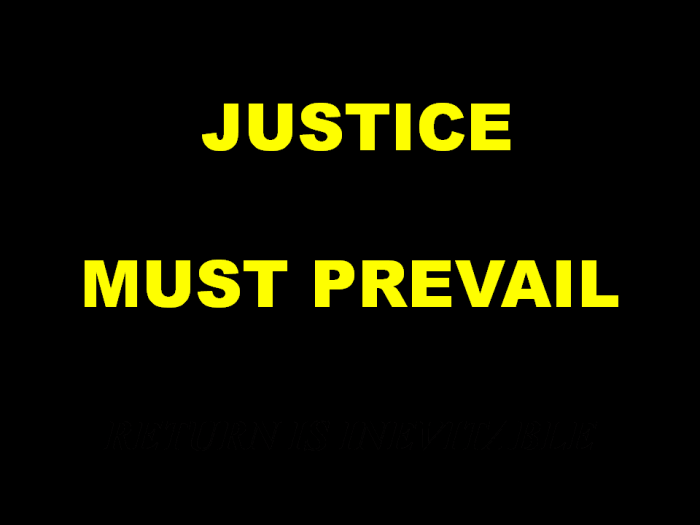EDWARD SAID MEMORIAL LECTURE 2019
You can jump to any segment:
00:00 Introduction of Samer Shahin
08:03 Introduction of Bassem Dally
17:50 Dr. Salman Abu Sitta Lecture
18:40 1) Edward Said / Australia
33:30 2) Al-Nakba
42:33 3) The Way Forward
51:15 4) Reconstruction of Destroyed Villages
01:01:30 5) ANZACS
01:09:02 6) I Have Faith
01:12:25 Q & A
I would like to express my thanks to AFOPA (names) for extending an invitation to me to give this lecture.
It is a pleasure to be here in Australia. I have given talks in many places, from San Francisco west to Japan east but I have never been to Australia before.
I am particularly happy to give this lecture because I have historical connections to both Edward Said and Australia.
First, Edward.
The Israeli war of 1967 came to us as a big shock after the bigger shock of al Nakba of 1948. We Palestinians in the West were horrified to see that our hope of returning to our occupied land in 1948 was now dashed and that the rest of Palestine and parts of Arab countries became occupied. We were hoping and planning to go west and north, back to Jaffa and Haifa and to hundreds of depopulated villages. Now we were pushed east, out of what is left of Palestine.
What added salt to injury was seeing people dancing in the streets of London and New York rejoicing at the occupation of our land. The Zionist narrative was embedded in their minds for so long. The real aggressor and the real victim exchanged places in their minds.
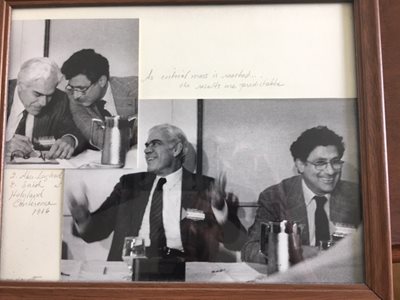
As a response, the Arab American University Graduates (AAUG) was formed in North America at the initiative of Prof Ibrahim Abu Lughod, with the aim of educating the Western public on Palestine. We all joined. Ibrahim asked Edward (slide 2) to write a paper in his line of expertise in literature, on ‘the image of Arabs and Muslims in Western eyes’. Ibrahim told me later that Edward came back with the most eloquent paper. Ten years later, in 1978, Edward Said seminal book, Orientalism, appeared, and it remains a landmark until today.
Edward Said had since been participating in all Palestinian activities, advocating tirelessly Palestinian rights.
Barely one month after OSLO, Edward exposed its fallacy and deceit in an LRB paper which remains valid to the letter until today. At the 50
th anniversary of Al Nakba, Ibrahim and I wrote a declaration signed by 1000 Palestinians all over the world, denouncing Oslo and affirming the Right of Return. Edward wrote to me, amid his round three of chemo treatment, suggesting we should see Kofi Anan, the UN General Secretary to hand him the petition. In the year 2000, we participated in a conference in Boston upholding the Right of Return, the first casualty of the OSLO hoax.
We organized another international conference of Palestinians in London in October 2003. Edward was following this progress with interest in spite of his illness at the time. He wrote to me:
“I’m home or in hospital, quite ill and undergoing treatment and having a bad time, though I can still write and, I suppose, think. As for the meeting you mention—can’t we get it going? I think it’s massively important”.
Sadly, he passed away less than a month before holding our conference. He was present in the conference and ever since in our Palestinian life in all but body.
As to my connection with Australia, this is a long one. Although as I said I have never been to Australia, Australia came to me.
My father told me that, in the summer of 1916 Allied planes dropped leaflets on them promising them freedom and independence if they join the war effort against the Turks. It did not tell them that, at the same time, two diplomats, the British Mark Sykes and the French Francois Picot, were huddled in a room with the Middle East map on the table, planning how to carve our land between them.
What our people knew and saw was soldiers of the British Empire marching into Palestine.
In the spring of 1917, the British Army advanced to occupy Palestine, under the curious name,
The Egyptian Expeditionary Force. They failed twice to take Gaza, suffered tens of thousands of casualties, in spite of bombing Gaza with poison gas canisters.
They had to think of a new plan of attack.
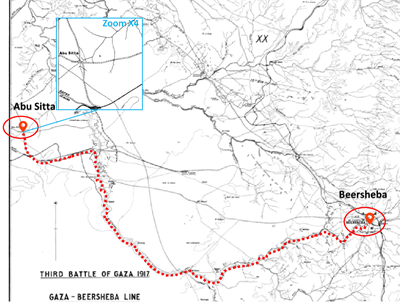
If you look at WWI maps at the ANZAC archives in Canberra, you will see the name of my land: AbuSitta (Slide 3). From this location, the 4
th Light Horse Regiment marched eastward all night in a new line of attack. It surrounded Beersheba from the east where it was least expected.
Beersheba fell at 6pm on Wednesday 31
st of October 1917. It was the first British victory at Palestine doorstep after two major failures, in Iraq and Gallipoli in Turkey. Our apparent joy of being freed from the Turkish dominance in Palestine and our anxious fulfilment of the Allies promise of freedom and independence for Palestine, all these have turned into
a nightmare. Next morning, when General Allenby sent his victory telegram to London, Balfour, the British Foreign Minister, opened his drawer, pulled out the paper he agreed with the Zionists months before and signed his infamous declaration on November 2
nd, 1917. It was a
shameful treacherous document, giving away what he did not own, to those who have no title, in the absence of the lawful owners of the land.
Since then, Palestine endured hundred years of wars, death and destruction, with no end in sight.
Fast-forward 30 years from WWI, in 1948, I was then a 10year old primary school student at Beersheba boarding school, (slide school 4) a hundred yards from the pole where the Australians hoisted the British flag and lowered the Turkish flag, after 1400 years of Arab and Islamic rule.
Next door to my school lies the War Cemetery where 31 fallen ANZAC soldiers out of 800 in the regiment were interned. At the gate of the cemetery a marble plaque had these words carved on it (slides 5):
The land on which this cemetery stands is the free grant of the People of Palestine to whom it was given by the Municipality of Beersheba…
That was a Palestinian municipality and its mayor was Palestinian. He was Sheikh Freih. He had an important role in ANZAC victory. I’ll come back to this point later.
One morning, in early April 1948, the school master gathered us in the morning procession and told us that the Jews were killing Palestinians in Deir Yassin and attacking many villages around Jaffa and Haifa. “I have no way to protect you. You have to go back to your families”, he said.
The school master did not know of course that that was the week in which Ben Gurion ordered the start of Plan Dalet. He did not know that that was the beginning of the Zionist Invasion of Palestine.
We too did not know the extent of that attack at the time. For myself I have never seen a Jew before. We heard they were somewhere around Jaffa and Haifa where they landed on our shores. We heard they had their military formations. We heard that they came from different countries and they spoke a babble of languages, they wore a variety of odd uniforms. They did not all look the same. They had machine guns and tanks, which we did not.
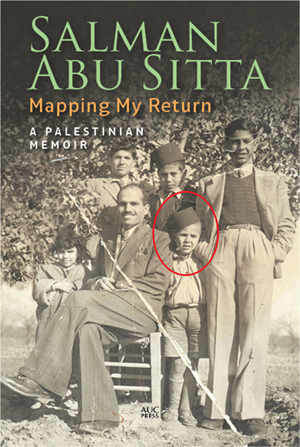
As a child, I wondered who were these people? Why have they come from afar to kills us, take our land and destroy our life?
But I had a more urgent task. I was left in the school with two pupils my age and we had to find our way to our homes, 45 kilometers away. We were told that Jewish Jeeps intercept the road towards our home. They ran patrols in jeeps with machineguns scouting a wide area; they shot anybody they could find in their way.
The journey from my boarding school to my home looked like an eternity. We children had to walk all this distance. Finally, we arrived at my home in Al Ma’in. I had to rest in bed for 3 days. My story was told in detail.
(slide6 book cover)
If I thought I was safe, I was wrong. Six weeks later, on the day Ben Gurion declared his state, 14 May, we were attacked in Al Ma’in by the Haganah in the middle of the night. We saw the headlights of 24 armoured vehicles approaching us. A monster with 48 eyes faced us with the ominous roar of its engines. The children and the women went in hiding in a nearby ravine. I was one of them. I saw the flash of bombs and the rising smoke from our demolished houses, from the school which my father built in 1920, from our motorized well and flour mill,
Bayara.
As the sun rose, we saw the debris of all our physical existence, in the smoldering remains of the houses. We saw the corpses of those killed. On that day, Ben Gurion and his Polish settlers declared their state of Israel, on my land.
On that day, I became a refugee. From that day, I started my life journey on the Road to Return Home. I am still walking on that road for 26,000 days and nights.
I did not and shall not ever give up. Until we return.
Al-NAKBA
Ladies and Gentlemen
Let me tell you in the clearest way possible.
The Palestinian Nakba is unsurpassed in history.
For a country, like Palestine, to be invaded and occupied, emptied of its people, driven into refugee camps, its physical and cultural landmarks systematically obliterated, its geography taken over and renamed, its history erased from all records, its heritage expropriated as the invader’s own, its destruction hailed as a miraculous act of God and as a victory of the few righteous over the savage many, all done according to a premeditated plan outside the country, meticulously executed, supported by colonial powers in every field, its refutation by the rule of law and the words of truth and the cries of the victims for justice are forbidden as the eternal sin of anti-Semitism, with all this maintained, not for a period of a brief war, but for seven decades and counting...
is indeed unsurpassed in history. No colonial project has been beset with so much falsification and deliberate misinformation as the case of Palestine. Ponder these terms
Palestine is a Land without people. God given land. We were there 2000 years ago, now we decided to return. Britain decreed Palestine as our national home. UN decreed the same. We were in a state of self defense. Palestinian refugees left on Arab orders. There were no massacres or ethnic cleansing. There is no occupation today.
It really boggles the mind. None of these statements are true.
That is one reason why justice is elusive so far. International law and a myriad of UN resolutions have been calling for justice in Palestine. The Right of Return resolution has been affirmed more than 130 times, the longest standing resolution in UN history.
Why then is this conflict, which is really Zionist Invasion, still claiming victims almost daily? Why is al Nakba still going on after 70 years?
The beginning was 100 years ago at the treacherous Balfour Declaration. That was a false promissory note. If this was done by an individual today he would be behind bars. In spite of British collusion during 30 years of the Mandate, Zionists could only acquire 6% of Palestine. At the end of the Mandate, and under strong US pressure, the UN passed resolution on partitioning Palestine: 55% to new European Jewish colonists and 45% to the majority Palestinian population. (slide 7) The UN partition plan was only a recommendation; it has no legal authority. Four months later, the UN and the US dropped the plan in favour of UN trusteeship. Zionist media never tells you that the Partition Plan was dropped.
At this event, Ben Gurion got mad. He unleashed his Haganah militia to attack Palestine under the name Plan Dalet.
Thus started the Zionist invasion of Palestine. In six weeks from first of April to 14 of May 1948, the Haganah conquered critical locations in Palestine and established Israel on the ground, after Herbert Samuel (1920- 1925) laid its legal foundation 28 years earlier.
In these six weeks, 220 villages including most cities were attacked and depopulated, almost half of all Palestinian refugees were expelled, and 22 massacres out of 50 that took place over the course of the Nakba were committed. During those same six weeks 17 military operations were carried out by nine brigades. In any attack there were superiority of numbers up to 1:10 against the defenders. In total, Israel mounted 31 military operations to occupy several regions of Palestine thus increasing their control from 6% of Palestine at end of the mandate to 78% by the middle of 1949.
(slide- Plan Dalet 8,9)
That was before Israel was declared, before the British left Palestine, before any Arab soldier entered Palestine to save Palestinians.
That was the real invasion of Palestine. It was a Zionist invasion.
So was Israel in a state of self defense? Or was it the aggressor?
The expulsion continued. From expulsion of half the refugees, (slide 10) to total expulsion of refugees in 560 towns and villages, the biggest and longest and continuous expulsion operation in the history of Palestine.
That was Al Nakba. (slide 11)
An expulsion of this scale could not happen without massacres.
You know one of them, Deir Yassin. This is another, Tantoura. (slide 12). Israeli forces attacked the village. 240 farmers were taken to dig ditches, thrown in the ditches, shot and killed. That was one of 50 massacres in 1948. The survivors were taken to 17 concentration and forced labour camps according to the documents of the Red Cross. (Slide map 13).
Yes civilians were taken to concentration camps.
This massive displacement is one major war crime. But the denial of their right to return to their homes is another war crimes. The war crimes never stopped. The victims were always the refugees, those who were expelled and never stopped demanding the Right to Return home.
The last major Israeli assault on Gaza Strip in August 2014, the third in six years. Israeli snipers wounded 1700 protesters in one day Gaza (Slides 14 and 15).
This fundamental fact is the root cause of the suffering in the region. This fact is impossible to ignore.
The international law stands as a lonely witness to all this.
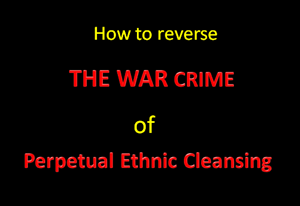
In every conceivable article of international law, national and regional covenants and treaties, the right of displaced people to return home is sacrosanct. Palestinian refugees received the most consistent affirmation of this right.
Thus, there is a stalemate: between Palestinian determination to return home and the Israeli wars to deny their return.
It can only be broken by the implementation of international law and the end of ethnic cleansing. (Slide 16).
I maintain here that there is no demographic, geographical, legal, logistic or economic reason to justify the denial of the refugees’ right to return home . The only obstacle is the racist policies of colonialism. It is time to abolish them.
Positive Steps Forward
Let us take the positive step and start planning the return of the refugees. First, we have to chart the map of the Future Palestine. What does look like.
Three elements should be examined.
(slides 17-18-19)
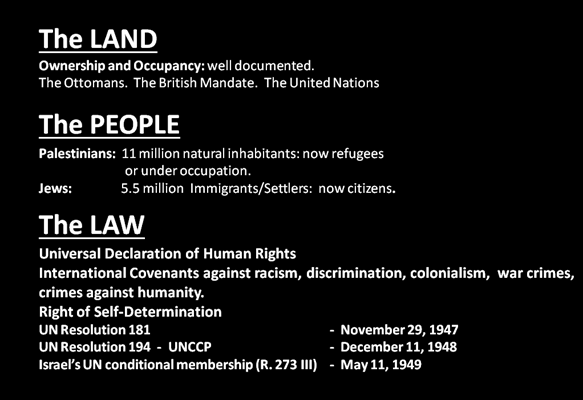
1. The people
2. The land
3. The applicable laws
The last two, the land ownership and the applicable laws are sufficiently documented. It is the population that we need to examine carefully.
They consist of: the remaining Palestinians in Palestine and the returnees who are now refugees. Then there is the existing Jewish population. All population figures pertain to the year 2008.
Distribution of Present Population in/out Palestine
Today Palestine in its three divided regions: Israel (Palestine 1948), West Bank and Gaza has a total population of about 10.5 million (all figures for 2008). Of this number Palestinians and Jews are comparable (4.7 m to 5.8m respectively).
(Slide 20) Palestinians and Jews in and around Palestine
The number for Jews includes all those who are not Palestinians, viz 300,000 foreign worker from Thailand and Romania (top tranche)and 1,000,000 Russians (next tranche) of whom about 40% are not certified as Jews by religious authorities. The parity between Palestinians and ‘Jews” is not important in itself. What is important is the granting of privileges to Jews and denials of rights to Palestinians.
This becomes clearer if we examine the figure for Palestinians. Of the 4,700,000 Palestinians on the soil of Palestinians, about half (2,230,000) are refugees (black dots on red background).
The bulk of refugees (5,400,000) are outside Palestine, mostly at a narrow ring along the borders of Palestine. In total, 6,770,000 Palestinians are UNRWA-registered and unregistered refugees, making up two thirds of Palestinian people, the largest percentage of refugees in any country at any time.

The question now is this:
If the international law is solidly behind the Right of Return
And if the Palestinians have never dropped their Right of Return
Can they physically return?
The Europeans tell me: How can you do that without creating a Jewish Nakba?
That is an immoral or perhaps a racist question. If a burglar shoots his way into your house and kills your father and throws your mother out of her house, then brings his cousins into your house, should you give him your house and you remain in a refugee camp?
The answer is clear.
Nevertheless, I am showing that this question is unnecessary.
Present Palestinian Population Distribution in Palestine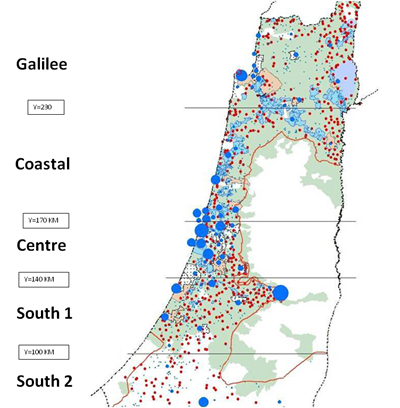
Slide 21- 6 clicks Present occupants of Village lands
We can identify the following regions because they have similar characteristics:
1.Galilee region
2.Coastal region between Haifa and Jaffa
3. Central region containing Tel Aviv and Jewish concentration
4.South 1 which is Gaza district
5.South 2 which is Beer Sheba district. Both South 1,2 constitute Southern District.
The maps show that, excluding Beer Sheba district, there are 246 Palestinian village lands which have no Jews today and 272 village lands which have few Jews, less than 5000 Jews in total. These village lands are shown green. Beer Sheba district is practically empty save for repopulated Palestinian cities. This surprising result was left hidden to deter the return of the refugees.
Jewish land during the Mandate is shown in blue and is today fully populated.. Cities whether mixed or not are shown in brown. Unlike depopulated Palestinian villages which were totally destroyed by Israel, destruction in cities was limited to old quarters.
Cities have expanded due to influx of immigrants. Many still retain a sizable number of Palestinians.
The Palestinian village lands which have more than 30,000 Jews are shown dotted.
They are few and are naturally adjacent to Jewish areas. So if we now repopulate Palestinian villages by the return of the refugees we do not find any appreciable problem. In Galilee, the Little Triangle and Beer Sheba, there is already a sizable Palestinian people, ready to welcome their kith and kin.
Even if you add present Jewish population in proportion to their size the same conclusion is still valid; the return is feasible and of course valid.
From the above it is clear there is no demographic problem in the return of refugees. In addition, there are no legal, geographical and historical reasons to prevent return except one major obstacle. That is Zionist racist policies and Apartheid.
Jewish Israeli Population Distribution Sect 0
Jews live in 924 localities with a total population of 5,509,778 within the armistice line of 1949. The distribution of those localities is revealing. Only 14 of those localities have a population of over 100,000 and 12 have a population between 50 and 100,000, and 29 localities between 20 and 50,000. That means that 87% percentage of Jews live in 55 localities, or five percent of the total number of localities. The area they occupy is 1400 km2 or 6% of Israel’s area. It is interesting to observe that this area where the majority live now is almost the same area they lived in during the British Mandate.
The remaining settlements are very small. For example, the kibbutz and moshav population is 390,542 living in 638 settlements excluding the Beer Sheba district. The original purpose of these small settlements was actually to hold and set roots in the refugees’ land to prevent their return. The original kibbutz consisted of 30-50 soldiers in a fortified military post who act as farmers in peacetime and act as garrison base in unsettled times. The kibbutz and moshav’s contribution to agriculture does not exceed 1.5 percent of Israel GDP, while at the same time they consume 70 percent of water.
End of Sect 0
(Slide 22) Land use.

You have not been told about this before. But it is already announced in Israel’s multi-expert survey conducted in 1995 entitled Israel 2020.
Thus it is possible to implement the return of the refugees without major displacement to the occupants of their houses.
Feasibility of Return
Phases of Return
Let us now examine the return plan still in more detail. There are three topics to consider.
First, rural refugees are the most pressing problem and can be repatriated easily.
Second, Jewish concentration areas.
Third, urban population in cities. There are 18 cities classified as follows: 3 mixed coastal cities (Jaffa- Tel Aviv, Haifa); 2 were mixed now Jewish (Tiberias and Safad); 3 were Palestinians now mixed (Acre, Lydda, Ramle), 4 was Palestinian, now Jewish (Baysan, Beer Sheba, Al Majdal (Asqalan), Isdud- was village), 2 were and are still Palestinian (Shafa Amr and Nazareth), 3 Palestinian cities on the Armistice Line whose land is lost(Gaza, Tul Karm and Qalqilya); and West Jerusalem was mixed, now Jewish.
Let us start with the return of rural refugees. We can divide the phases of their return into the following phases: rural south in two phases, rural Galilee in one phase, and central Palestine in one phase.
(Slide 23) Return of Gaza Refugees
Take the most tragic of refugee situations Gaza Strip.

We shall deal first with those whose homes are between latitude 60 kilometers and 140 kilometers (south 1,2).
In this area, most of the depopulated villages found refuge in Gaza Strip, which became home for the inhabitants of 247 villages, but a considerable number of villages in that region went to Jordan. Therefore, the return of population to these villages must simultaneously allow the return from Gaza Strip and Jordan.
We can repeat the same exercise for Galilee villages from latitude 230 to latitude 300.
(Slide 24) Return of Galilee refugees
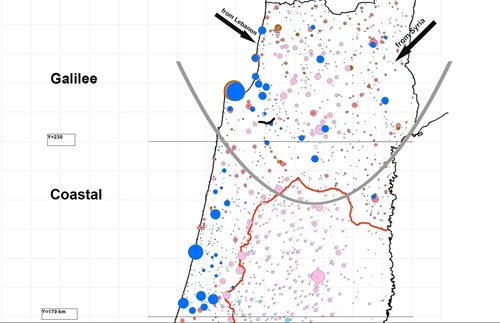
Returning the rural refugees in these phases will make a tremendous contribution to the return and will hardly affect the present Jewish occupants.
In this way, we could arrange for the return of three-quarters of all refugees without significant displacement of existing occupants. The kibbutz residents can either rent some agricultural land from its legal owners or, turn into industry and tourism, which would require a small area of land.
The return of the rural villages in the central region between latitude 170 and 230 is not straightforward for two reasons. (Slide 22). One, there is Jewish concentration on the coast. Two, there are existing Palestinian villages in this region.
This can be solved by creating independent Jewish cantons.
Jewish Urban Canton Details
As stated before, Jewish concentration is mainly urban in roughly the same area the early immigrants lived in during the British Mandate. We can divide this into three cantons: central canton around Tel Aviv metropolis, northern canton around Haifa, and Jerusalem canton. Jerusalem canton needs special political, historical, and demographic treatment and we shall not be discussed in this paper.
Central Canton
(Slide Map 25 -2 clicks). Central canton, Canton 1 exclusively Jewish, can be divided into three sub-cantons, all are on Jewish land shown blue. The first one C11 is Tel Aviv canton, and C12 Rishon Le Zion, and C13 Herzliya canton. To ensure physical continuity between these three cantons, some parts of Palestinian village land are added onto these cantons, shown in black. Cities are shown in brown. Palestinian land with new Jewish population over 30,000 are shown dotted. Canton 1 is in three parts to allow Palestinian villages to circulate. (2nd click). We can see that BUA generally covers Jewish areas and partly spills over to Palestinian areas. In this specially crowded area, about two dozen depopulated villages out of 560 (4%) are over-built by new construction.
There will be an absolute need for close and peaceful proximity of population between Jaffa City and Jaffa villages on the one hand, and the three branches of the central canton. There is Jewish population of over 30,000 on the lands of some Jaffa villages. This small number could rent accommodation or move to one of the Jewish cantons.
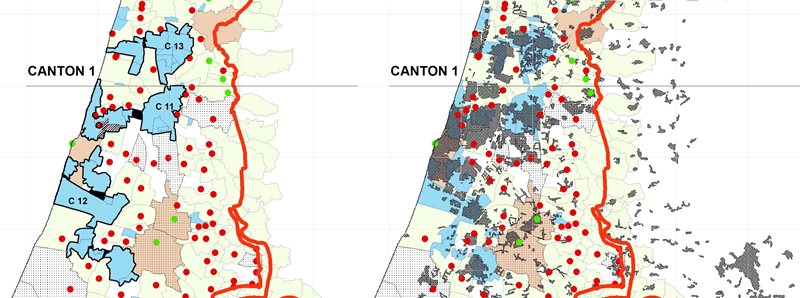
Reconstruction of Destroyed Villages
The refugees would now return to destroyed villages.
(Slide 26 -1 click) If you look at this Google picture you will see rural Israeli fields. It looks very innocent, but it hides a war crime. 2 click Here is the grave of a destroyed village.
This is Bayt Jirja, a village in Gaza district, south of Palestine. Its inhabitants are now refugees in Gaza Strip. Young people who hail from this village are the protesters at the barbed wire separating them from their homes. They are the ones killed or maimed by Israeli snipers.
But not all is lost.
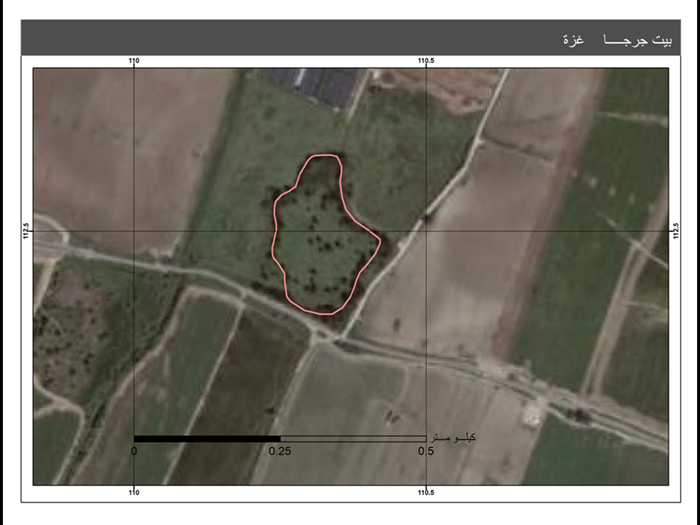
Here is Bayt Jirja comes to life again.
(Slide Map 27) . We have identified every house owner by name and where he and his family live today in a refugee camp, frequently within sight or at most within a bus ride.
There is a major reality hidden by the Israelis, that most (over 85%) of village sites are still vacant.
Now we are ready to bring the refugees back.
We have a database which enables us to know who the refugees are, where they are in exile maps and what are their villages of origin.
Let us start with one village , Qula in Ramle District.
(Slide 28) Locating Qula:
First we identify Qula from our data base. Locating on map—before 1948—after 1948.
(Slide 29)- Where are the people of Qula today? In which camp in Jordan? How can they get home? Which roads?
(Slide30) Let us trace one family now in Muzdar camp in Jordan. They know their house. But it is destroyed. Who will build it? Granddaughter Rola. Competition explain.
Slide 31 We can empty Al Buss in Jordan the same way.
Slide 32 We can empty Muzdar Camp in Jordan the same way.
Slide 33 We can empty Al Nuseirat Camp in Gaza the same way.
When they return they should start rebuilding their destroyed villages.
We started 5 years ago a program to do that.
First ---- documentation:
All villages were destroyed by Israel in a systematic program to deny the refugees their return. We tried to collect any piece of information we could find about destroyed villages: from scare aerial photos, Mandate surveys, village books and sketches by villagers. We then identified as much as possible the names of house owners. We digitize all that and created a coherent map of the village.
Next we checked the present site from Satellite images.
Next we started an annual competition among Palestinian architectural students to reconstruct their villages. The competition was judged by an international jury.
Here are nine examples.
(Slides 33 to 42). (3 ticks each)
The return can operate in phases -- (slide 43)-- the most dramatic is the return of Gaza refugees followed by those in Jordan.
Now all the logistics are in place.
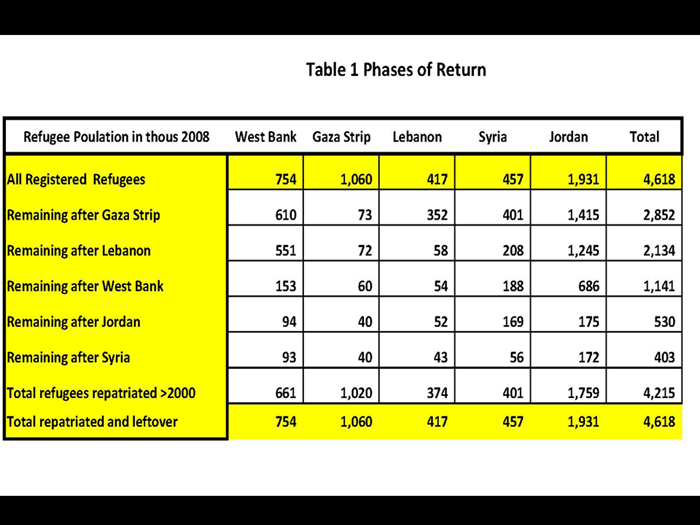
The cost of repatriation can be estimated from this table (slide 44). The amount needed is relatively small and can be offset by compensation to which the Palestinians are entitled since Al Nakba. Reconstruction of destroyed villages can be carried out by Palestinian engineers and labor quite easily, since many of them have built similar or much larger projects in the Gulf. It is worth noting the cost of reconstruction is a small fraction of the aid to Israel provided by the USA and European Union. Moreover, this cost of construction will be incurred only once, not annually as the case of aid to Israel. UNRWA should be able with its predominantly Palestinian staff to supervise the repatriation for a period of up to eight years. Law under these circumstances should be based on democracy and justice, and forbid at pain of punishment any resort to racism, Apartheid, and discrimination. The key determinant is upholding human rights and principles of justice.
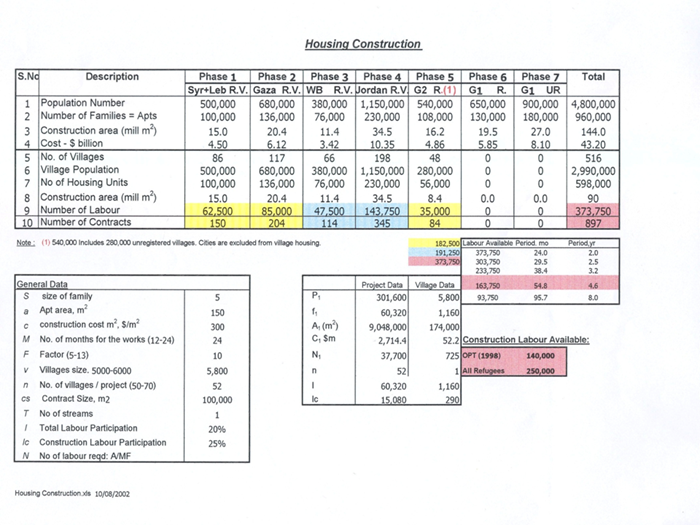
Conclusion and ANZAC AGAIN
Now back to Australia. A historical note may be worth a thousand speeches.
Ladies and Gentlemen
The wound of Palestine is still bleeding. You recall my story about the Australian conquest of Beer Sheba and our hopes of liberation, freedom and independence, about my school and its neighbor, the ANZAC war cemetery.
Well, the Australians came back to Palestine in 1940 to help the British Army, then stuck in the Egyptian Western Desert against the German army led by General Rommel. They came to defend Palestine against possible German attack.
They were welcomed by Palestinians.
Here is Arthur Samuel Allen (Tubby) (1894–1959), Commander of the Australian forces, greeted by Palestinian notables in Gaza. (slide 45). There is more to this story.
Here is Gen Allen inspecting his troops in Camp Hill 69. (slide 46). Where is Camp Hill 69?
It was built on the lands of Beit Jirja village, (slide 47). Here is the village and here is the camp.
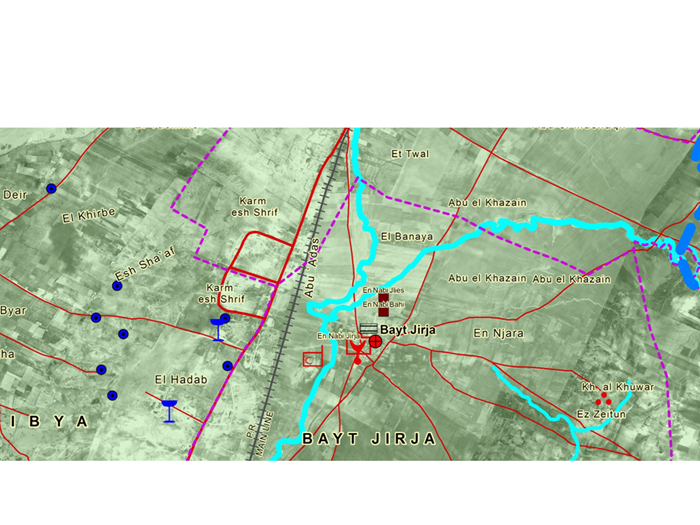
What happened to the village and the to the camp in 1948.
The Zionist forces attacked the village, destroyed it and expelled its people. They are now refugees in Gaza.
And the camp? Taken over by Israel, complete with contents.
There is another tragic turn of events. The welcome given by Palestinians to the Australians in 1917 and 1940 was not reciprocated.
Imagine how I felt, as a Palestinian and a Beer Sheba son, when I read the news about the joint Israeli- Australian celebration.
Yes Celebration.
On Nov 2010 Australia and Israel celebrated the 93rd anniversary of Beer Sheba conquest in 1917.
A symbolic formation of the 4th Light Horse Brigade paraded in Beersheba’s streets. The Australian ambassador said that her country had a special bond with the Israeli city. The Israeli city!
Who responded to these honors? You would expect it was the memory of the man who made the ANZAC victory possible.
There he is, It was Sheikh Freih Abu Middein, (slide 48) the man who was awarded the Order of The British Empire. The man who became the first Mayor of Beer Sheba.
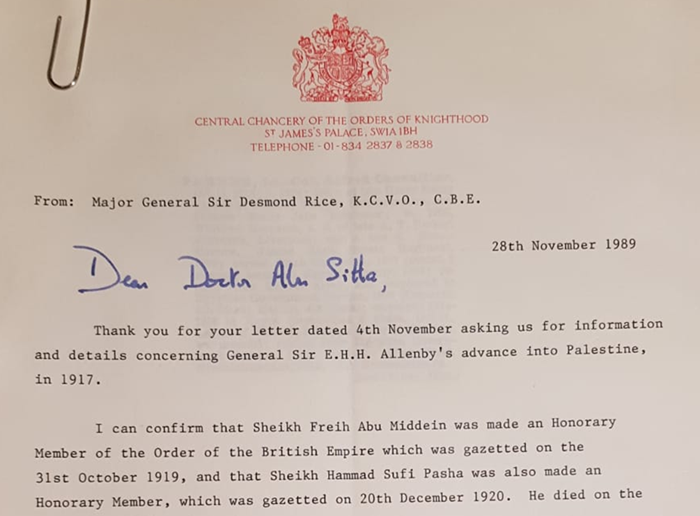
No it was not Sheik Freih or any of his Palestinian successors.
It was a recent Jewish immigrant probably from an East European shtetl by the name of Ruvik Danilovich. He became
Beersheba’s mayor. He said that the event “symbolizes faith and ongoing struggle for freedom and independence.”
Really?
The coup de grâce came from Rabbi Raymond Apple, a senior rabbi to the Australian
Defense Force.
He said, without a hint of irony, “Israel deserves a Nobel Prize for unstinting dedication to humanity in the face of insults and untruths”.
But I have faith, unshakeable faith, that the March of Justice will reach its destination.
I have faith that this child will return home. (Slide 49)
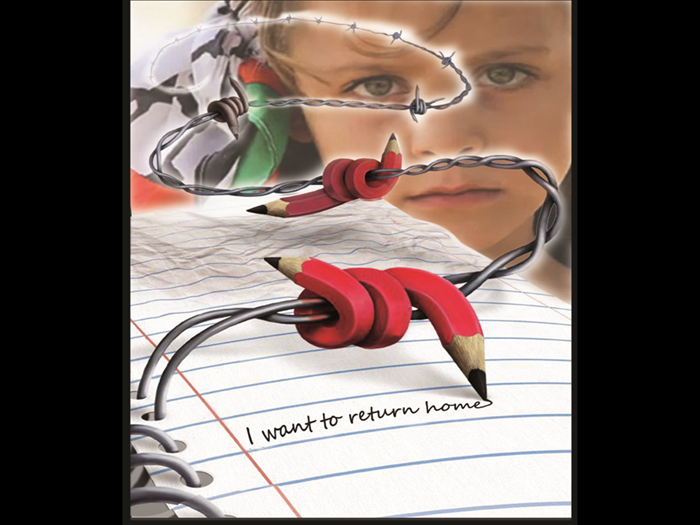
In spite of all this overwhelming power against defenseless people, it has not succeeded over seven decades to break their will or to demolish their spirit.
On the contrary, the Palestinian people grew in population from 1.5 million in 1948 to 13 million today to 18 million in 2030, half of them on the soil of Palestine.
Half are dispersed.
Their dispersion around the world created a mini Palestine in many countries, including this country. There is hardly a university in the Western World which does not have a Palestinian professor. There are few Palestinian members of parliament in a number of countries.
Their dispersion in the world carried with each one a candle, shining truth in the darkness about their fate, spread maliciously by Zionism. Yes, candles’ light is small, and the power of darkness is much greater. But let there be many candles everywhere, held by every person of conscience.
No power can suppress the struggle of the human spirit for freedom. And the right of return is sacred to all Palestinians. It is legal in every concept of international law, and as you have seen, it is feasible, moreover, it is inevitable.
So let us all work together so that Palestine and its people be free.
Thank you. (Slide 50)
